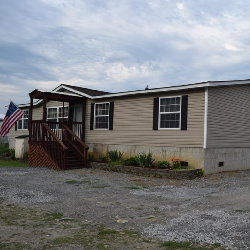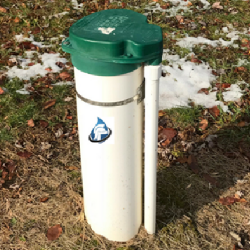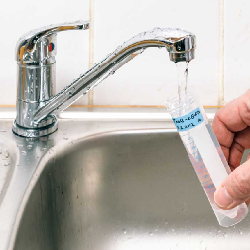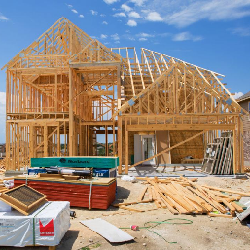Does Your Yard Make the Grade?
Many homeowners are unaware of how much slope (grade) is needed around the foundation of a house. If grading is not done properly or has settled over time, excess water runoff could be directed toward the foundation instead of away from it. With spring approaching, ensuring your home has proper grading around the foundation is important to helping prevent a wet basement.
Negative/Settled Grade
If the ground around your house is completely flat or, worse yet, slopes down toward the foundation, you could easily develop a drainage problem. With negative grade, you may notice water pooling next to the house’s foundation walls, a swampy yard, and even cracked foundation walls. Regardless of the type of home, whether on a slab, crawl space, or basement, proper drainage is necessary. Over time and left uncorrected, unwanted water can eventually compromise the foundation’s integrity and lead to a damp, leaky basement.
Settled grade occurs when the soil that was back-filled next to the foundation walls settles downward. The soil grade is positive when the house is sold and over the next 1 to 3 years typically the soil will often settle creating a negative grade in some or all areas around the foundation walls. This is usually remedied by adding additional soil.
Positive Grade
When a foundation grade is properly established, the land slopes away from the home and uses gravity to direct rainwater and snowmelt away from the foundation. A proper grade is the key to preventing excess water from compromising the foundation’s integrity. However, to do land grading properly, you must first know how much slope you need to have away from the house’s foundation. According to industry experts, a good slope to aim for when grading land around a house foundation is about 6 inches for the first 10 feet (or approximately a slope of 5%).
High Grade (or High Mulch/Landscaping)
Homeowners who pile up too much mulch next to their foundation over the years can contribute to the rotting of siding and wood components. Water can splash up from the ground onto and behind the siding, or in the case of mulch, when piled up it acts as a giant sponge that can transfer moisture to the wood components vulnerable to rot. When siding is too close to grade, it should be corrected as soon as possible.
Gutters & Downspouts
Even if the grade is correct the water running off the roof can wreak havoc on the foundation if it is not also properly directed away from the foundation with downspouts and downspout extensions. Downspouts should direct roof water at least a few feet and preferably 5 to 6 feet away from the foundation. Proper grading will ensure that the downspout discharged water flows away from and not back towards the home.



















